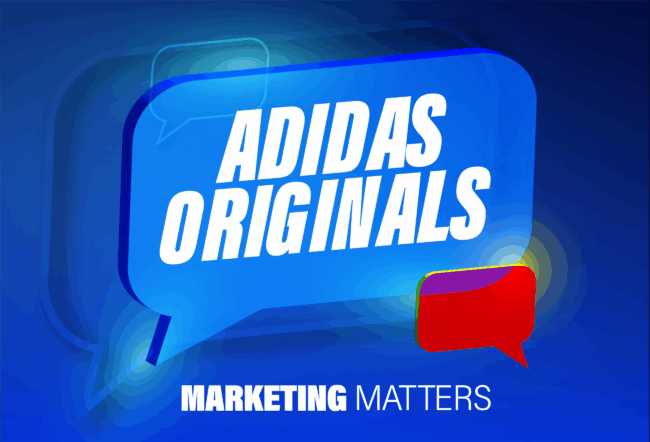John Zhang has a message for Cingular Wireless and Verizon Wireless or, for that matter, any company that uses its ads to attack a competitor. Instead of luring away your competitor’s customers, you may just be hurting yourself.
Zhang, a Wharton marketing professor, has found that combative ads — the sort of comparative spots that beer makers, particularly Anheuser-Busch and Miller, are famed for — may backfire. Instead of pulling consumers to an advertiser, they may just make people indifferent to all offerings in a product category. And that, in turn, can lead to lower profits for everyone as businesses cut prices to lure these buyers. “Combative advertising, a characteristic of mature markets, is defined as advertising that shifts consumer preferences toward the advertising firm but does not expand the category demand,” Zhang says in his research paper titled, “A Theory of Combative Advertising.”
That’s exactly the sort of advertising that Cingular and Verizon, the country’s largest wireless companies, have employed. A year and a half ago, for example, Cingular ran a checklist comparing its service, side by side, with Verizon’s. At the time, Cingular defended the ad, saying it had been provoked by its competitor’s errant claims. “The best advertising for the category is where companies talk about their benefits,” said Marc Lefar, Cingular’s chief marketing officer, in a newspaper interview. “But we will not be bashful at all about clarifying misleading advertising by our competitors.” Lately, the two carriers have both taken to boasting about the quality of their networks. Verizon claims that it has “America’s most reliable network,” while Cingular insists it has the “fewest dropped calls.”
Zhang’s study — conducted with Yogesh Joshi and Jagmohan Raju, both of Wharton, and Yuxin Chen of New York University — suggests that any company tempted to engage in advertising combat should think twice. “In the past, people said that if you increased your advertising, it couldn’t do any harm other than wasting money,” Zhang notes. “We went one step further and said, ‘You can intensify price competition.'” And without commensurate reductions in costs, lower prices lead to smaller profits.
The traditional view of advertising says, “Consumers are bombarded with so much advertising and become so convinced by the [firm that they buy from] that they become partisan customers [of] the firm,” the study explains. This undoubtedly happens in some cases. But at other times, “consumers receive a good dosage of advertising from both firms and see the benefits in both firms’ products such that they feel more indifferent about buying from either.”
Zhang and his co-authors use the metaphor of a tug-of-war to explain their thinking. Typically, people assume that one team will win in such a contest. But two evenly matched teams can end up in a stalemate, pulling hard but failing to budge the other side. So it is, too, with advertising. Combatants can pour money into advertising, but neither gains an advantage.
Watching Combative Ads
The four scholars created a mathematical model to demonstrate how combative advertising might create indifferent consumers and depress prices for everyone. Their model yields an unexpected conclusion: Expensive ads may sometimes help companies that are tempted to use combative ads. “We show that it is possible that, with higher unit costs for advertising, the equilibrium levels of advertising are lower, resulting in higher profits for competing firms,” their paper explains.
In other words, costly ads can discourage companies from advertising and thus prevent them from increasing consumers’ indifference. “In the markets where advertising creates indifferent consumers, firms may want to embrace, rather than fight, the increase in advertising costs,” their study suggests.
The researchers tested their model in an experiment with undergraduate students. They asked the students to watch a series of combative ads from five pairs of companies in categories ranging from German cars to toothpaste. Each category had to have at least two major players that engaged in combative advertising. For the German automakers, for example, they used TV ads from BMW and Audi. For toothpastes, they chose Aquafresh and Colgate.
Before the students watched the ads, they recorded their impressions of the firms, distributing 100 points between the two competitors. Under this arrangement, a perfectly indifferent student would give 50 points to each. After seeing the ads, the students ranked the companies again.
In four categories — cars, toothpaste, courier services and credit cards — the students became more indifferent after viewing the ads. In only one category — batteries — did the students become more partisan. (Message to Duracell and Energizer: Keep going at it… .)
What distinguishes batteries from the other categories of products? That’s not something that Zhang and his co-authors explored, so they were willing to say only that this happens to be a sector in which consumers are more sensitive to advertising. They did venture a few possible factors that could influence that sensitivity, namely “consumer characteristics, product characteristics and message effectiveness.” A company should investigate each of these before launching a combative campaign, Zhang says. “At a high level, our message is that, as managers, you can’t blindly believe in the effectiveness of advertising. If you notice that profits are going down when you increase your advertising expenditure, maybe now you know why.”
And advertising firms should consider steering some clients away from combative ads, or at least urge them to thoroughly investigate their product category before using them.
Not every ad, of course, tries to smack down a competitor. Advertising can also be informative or complementary. Informative ads do what the name suggests: They explain the features and benefits of a product or service. These tend to work best in a new or growing product category, where consumers are learning about the offerings. FedEx excelled at this sort of advertising in its early years, Zhang says. It hammered on the reliability of its service. As a result, he suggests, consumers still associate the brand with reliability.
Complementary ads “make people feel good about the product and willing to pay more for it,” Zhang notes. They do this by creating an appealing aura — think Marlboro Man — or associating an offering with a star, even when the link between the product and the pitchperson’s expertise seems tenuous. T-Mobile endorser Catherine Zeta-Jones, for example, has plenty of star power, but her knowledge of cell phones would seem no greater than anyone else’s.
King of Beers, Queen of Carbs
Apple Computer has employed complementary ads to create this type of a halo around its iPod music player, Zhang points out. “All MP3 players do the same thing, but nobody else has the ‘cool’ factor of iPod. It’s a status symbol: You’re young, cool, vigorous if you have one.” Nike, too, excels in this niche. The athletic-gear maker has long associated itself with top athletes, like bicyclist Lance Armstrong and soccer player Mia Hamm, and has offered up inspirational, if vague, slogans like “Just Do It” and “There Is No Finish Line.” It tries to make customers feel more athletic and give them a sense that they can share in the experiences, if not the accomplishments, of their heroes. You may not be able to score goals as deftly as Hamm or ride as rapidly as Armstrong, but at least you can wear their shoes. At the same time, you will never see a Nike ad bragging that its sneakers are bouncier or more supportive than Adidas’ competing models.
America’s leading beer brewers, in contrast, have zinged each other in ads for years. In 2005, for example, Anheuser-Busch, which calls Budweiser the “King of Beers,” labeled Miller Lite “the Queen of Carbs.” It also tweaked its competitor for being “South African-owned,” in contrast to its longtime American ownership. South African Breweries acquired Miller in 2002, and the parent company is now known as SABMiller. Miller, for its part, gives as good as it gets. In an earlier ad, it had said it wanted its brew to be the president, rather than the king, of beers. The reason: “This is America! We don’t kowtow to a bunch of tiara-wearing crumpet eaters.”
Presidents, or rather a presidential campaign, originally motivated Zhang to take a closer look at ads. He started scrutinizing them seriously six years ago, when George Bush and Al Gore squared off. He found that the negative ads that are so common in modern campaigns didn’t draw him to one of the candidates, but made him uneasy about both. That got him wondering whether commercial claims might have the same effect. “Most of the political scientists say advertising doesn’t play much of a role in people’s voting choices,” he says. “They just reinforce what people already believe, their preferences and partisanship. But sometimes you also observe that you feel a little more indifferent to the politicians after your hear their ads.”
A Theory of Combative Advertising



